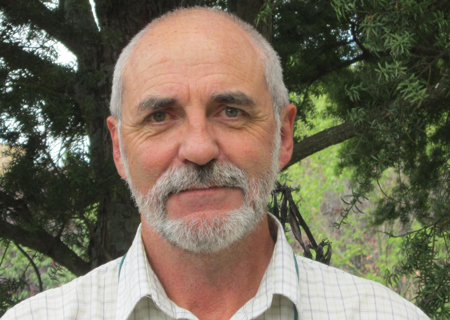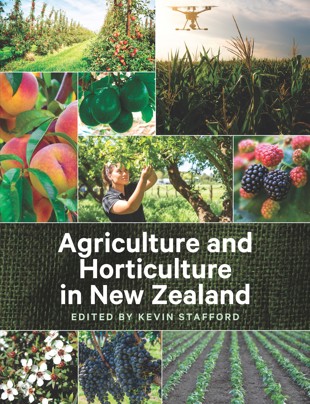Q1: The subject is a wide-ranging one and the book covers a lot of ground. Who do you see as the target reader?
The target readers are high school students studying agriculture and horticulture, and early stage agriculture and horticulture students in university, including those studying agricultural economics. Members of the public with an interest in either of these topics will find the book very informative. Also, I hope farmers and horticulturalists will find interest in the chapters on topics with which they are not familiar.
Q2: What do you hope they will get from the book?
Readers of this text should come away with a very good general knowledge of agriculture and horticulture as practiced in New Zealand. It is a primer, but it will introduce the reader to a wide range of crops and to subjects such as weeds and soils. The chapter of conservation horticulture is particularly interesting to the general reader.
Q3: There is a lot of innovation in horticulture, what did you find the most interesting?
The ongoing developments in apple and kiwifruit production and their marketing are a credit to the personnel involved in these industries. The breeding of new types of fruit to suit different markets is fantastic. I think the ongoing development of robots for use in horticulture is very interesting.
Q4: There is a feeling in the book that horticulture is a booming industry and one with lots of opportunities. Is this the case, and what are the limiting factors to growth?
I think horticulture is booming but there are problems. These include loss of good land to housing and a shortage of labour, which has been particularly bad due to COVID-19. The kiwifruit industry has developed a very successful model of production and marketing. And although markets are distant, New Zealand has a good reputation; this needs to be protected.
Q5: Pasture production is the key to much of our agriculture, what challenges do farmers face here?
The challenges are many but include breeding grasses and other plants for volume, nutrient content, disease resistance and durability. There are issues with crop grazing in winter. Developing techniques to measure and minimise the leakage of fertilizers into water is important. Future developments in forage crop production may increase livestock production within an environment of climate change and concerns about methane.
Q6: Who are the contributors to the book?
The people who wrote the individual chapters are mainly academics working at Massey University but individuals working in specific horticultural industries were involved with some chapters.
Q7: What were the challenges in getting the book to print?
Working with a large number of contributors is always a challenge and I would like to thank those authors who completed their chapters quite quickly, especially during a difficult year.
Q8: With lockdowns and campus closures, what did you find most difficult about 2020, and were there any positives for your research and writing?
Lockdown was no major issue to me as I could work from home and continue supervising my post-graduate students through Zoom meetings. It also allowed me to continue reading and editing this book and write research papers.
Q9: What are you working on at the moment?
I ‘retired’ from Massey University last week as an Emeritus Professor, but I am co-supervising seven PhD candidates who are quickly finishing up their theses. I am involved in some consultancy work around animal welfare issues. My personal project is writing a history of my family which has been in County Wexford for nearly 1000 years in the context of Irish history over that time. This is for my Kiwi grandchildren.
Q10: What are you reading that is capturing your interest?
Last year I made a resolution to buy no new books but to read the books I have collected over the years and to reread some favourites. At the moment I am reading Isabel Allende’s The Stories of Eva Luna and have just finished a couple of old books on Australian history by Geoffrey Blainey. I hope to finish The God of Small Things by Arundhati Roy and Room by Emma Donoghue soon and then get on to Shuggie Bain.


